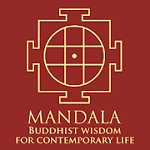
|
|
|
Home Asia Pacific South East Asia Myanmar Myanmar Protest News Burmese monk paints grim pictureBy Alan Brown, London Sunday Times, October 8, 2007RANGOON, Burma -- To the 18-year-old novice monk, the makeshift jail seemed like a deliberate mockery of life in the Buddhist monastery from which he had been dragged. Sitting in rows from one end of the room to the other were hundreds of hushed, cross-legged figures, their heads bowed and their eyes shut.
This was the scene last week inside the Government Technology Institute in Rangoon, one of four buildings used as holding centers for the thousands of monks, democracy activists and ordinary civilians arrested during Burma's vanquished pro-democracy uprisings. Such is the climate of fear on the streets that few details have emerged about the situation inside the holding centers, whose existence the government has not confirmed. However, through a trusted intermediary, the Sunday Telegraph obtained a firsthand account of the novice monk who was released from the technology institute camp last week. Showing vicious bruises on his face and arms from soldiers' truncheons, he described seven terrifying nights after being arrested, along with 100 other monks, at Rangoon's Mingalar Rama monastery early on Sept. 27. "Day and night, we had to sit in crowded rows with our heads bowed down. If we spoke, looked up or fell asleep, we would be hit," said the monk, who asked that his name not be published. "We weren't allowed to move at all, not even to go to the lavatory. We had to just do it where we were sitting. Once in the morning, and once in the afternoon, the guards would come and give us water, but it would be only one or two bottles for 50 people or more." Some of the prisoners, he said, sustained severe wounds during their arrests, with cuts and gashes on arms and legs that penetrated to the bone. Despite the filthy conditions, no medical treatment was offered. During his time in custody, he said, he saw numerous fellow inmates pass out as they sat in the holding area. Three, he thinks, died from their injuries. Every now and then, prisoners were taken in groups of 10 for interrogation in neighboring rooms, where they would sit on the floor across from rows of plainclothes intelligence officers at a long trestle table. Each prisoner would go through remorseless questioning aimed at identifying the ringleaders of the protests. Many of his fellow inmates, the monk said, were innocent bystanders who had been arrested by mistake. After interrogation, their testimony was checked with intelligence officials in their neighborhoods. If those officials corroborated the monks' claims, they would be freed; if not, they would remain for further questioning. After being released last week, the 18-year-old novice was given a travel order telling him to return to his home village outside Rangoon rather than go back to his monastery in the city. Exactly how many others were still in custody was not clear. Burmese authorities said they detained nearly 3,000 and that all but 109 of those were released. However, the ruling junta announced dozens of new arrests yesterday, claiming in a government-controlled newspaper that guns, knives and ammunition were discovered in raids on monasteries. Human rights groups and Burmese journalists in Rangoon believe the number still in custody is much higher. "In Rangoon alone, we think that up to 25 monasteries were raided last week, and those are just the ones we know about," said a local newspaper editor whose reporters were monitoring the situation. "We think there could be anything up to 9,000 in jail right now, and the government is still looking for people." |
 Get your Korean Buddhist News here, brought to you by BTN-Buddhist Channel |
 |
 The Mandala app brings together Buddhist wisdom and meditation techniques with the latest insights of psychology and neuroscience to handle the challenges and complexities of modern life. The App offers a series of engaging talks and conversations with experts on a wide variety of topics, such as managing stress, dealing with adversity, developing greater resilience, cultivating empathy and compassion, creating healthy relationships, and many more. These topics are explored to help find greater peace, meaning and joy in our lives. Our panel of experts include Dr, Thupten Jinpa, Daniel Goleman, Kelly McGonigal and others.FREE DOWNLOAD here |
| Point
your feed reader to this location |
| Submit an Article |
| Write to the Editor |

